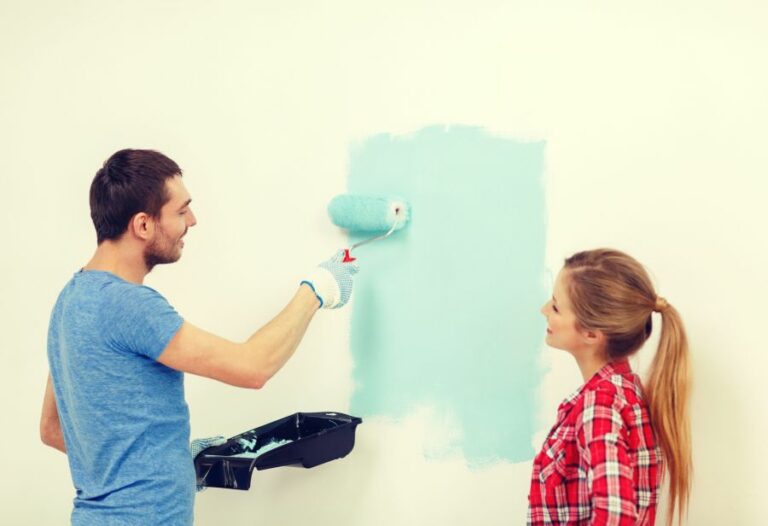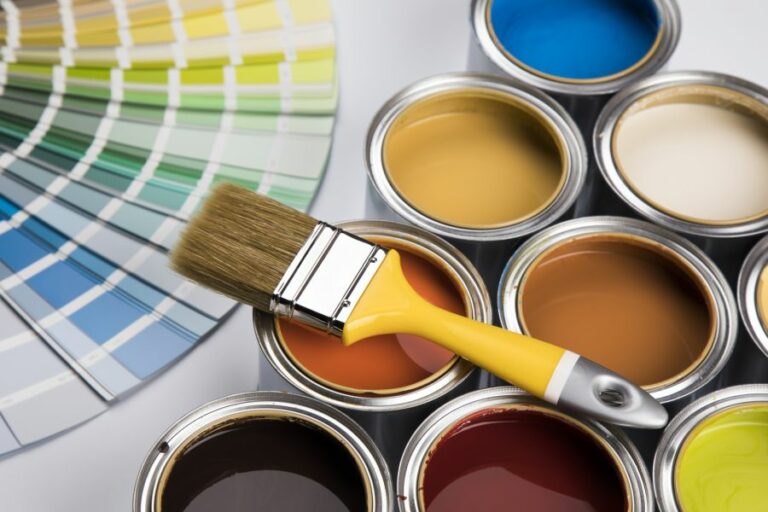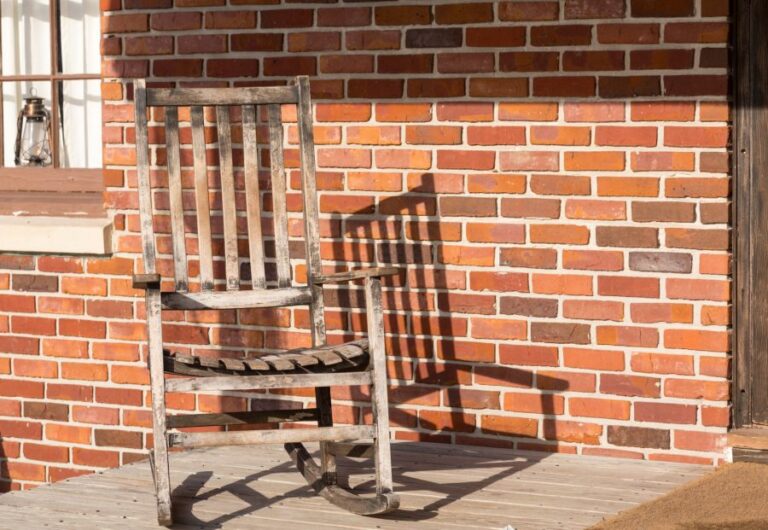Outdoor Spray Paint For Metal, 25 Things You Should Know
Are you tired of that rusty metal look on your outdoor furniture or fences? Bring life and color back to your garden. Discover the secret to choosing the perfect product for guaranteed results, as well as expert tips on how to apply paint effectively and ensure a long-lasting finish.
Outdoor spray paint for metal:
This guide covers various aspects of using outdoor spray paint for metal surfaces, discussing paint types such as acrylic, epoxy, and rust-preventative paints. Proper surface preparation, including cleaning, rust removal, and masking, is essential for optimal results. The guide highlights the importance of primer application, proper spray technique, and adherence to drying and curing times. For added protection and durability, applying a clear coat finish is recommended.

Choosing the perfect outdoor spray paint for metal surfaces can be daunting. Discover top tips on preparation, application, and product selection to ensure long-lasting and vibrant results for your next project. Keep reading to become a spray-painting pro!
Contents
- 1 Exterior Spray Paint for Metal Surfaces
- 2 What is the Top-Quality Spray Paint Ideal for Outdoor Metal Artwork?
- 3 Which Spray Paint Offers the Highest Durability for Metal Surfaces?
- 4 What is the Optimal Paint Finish for Exterior Metal Surfaces?
- 4.1 • Direct-To-Metal (DTM) Paints: A Versatile Option
- 4.2 • Alkyd (Oil-Based) Paint: Superior Durability and Gloss
- 4.3 • Acrylic (Water-Based) Paint: Low Odor and Fast Drying
- 4.4 • Epoxy Paint: Exceptional Resistance to Chemicals and Abrasion
- 4.5 • Urethane Paint: Long-Lasting Protection and Gloss
- 4.6 • Final Recommendation
- 5 What Type of Spray Paint is Best Suited for Metal Surfaces?
- 6 Is it Possible to Apply Spray Paint Directly on Metal Surfaces?
- 7 Is Spray Paint Effective in Preventing Rust Formation on Metal Surfaces?
Exterior Spray Paint for Metal Surfaces
Creating a long-lasting, protective, visually appealing paint job for outdoor metal surfaces can be challenging. However, with the right outdoor spray paint product and technique, any metal surface can be transformed with ease.
• Types of Outdoor Spray Paint for Metal
When it comes to outdoor spray paint for metal, various types of paint are available, each with its own benefits and drawbacks. Here are the most common types of outdoor spray paint for metal:
– Acrylic Spray Paint
Acrylic spray paint is a popular choice for outdoor metal surfaces due to its fast-drying and weather-resistant properties. This type of paint adheres well to metal and provides a durable finish that withstands the elements.
Acrylic spray paint is available in a range of finishes, including gloss, semi-gloss, and matte. It’s also available in numerous colors, making finding the perfect hue for any metal surface easy.
– Epoxy Spray Paint
Epoxy spray paint is renowned for its impressive adhesive capabilities and durability. It forms a strong bond with metal surfaces, creating a tough protective layer that resists chipping, peeling, and fading.
Epoxy paint is particularly suitable for surfaces exposed to extreme conditions, such as high levels of corrosive materials or extreme temperatures. However, it takes longer to dry compared to acrylic paints, making it a less convenient option for some projects.
– Rust-preventative Spray Paint
As the name suggests, rust-preventative spray paint is specifically designed to shield metal surfaces from rust and corrosion. This type of paint is ideal for outdoor metal surfaces exposed to moisture or fluctuating temperatures, as it forms a barrier that inhibits the formation of rust.
Rust-preventative paints are typically oil-based and may come in a variety of colors and finishes.
• Preparing the Metal Surface for Painting
Proper surface preparation is crucial when using outdoor spray paint for metal. Failing to prepare the surface adequately can lead to poor paint adhesion and reduced durability. Follow these steps for an optimal painting result:
– Cleaning the Metal Surface
Begin by removing dirt, dust, and grime from the metal surface. A mild detergent and water mixture will work well for most surfaces, but a specialized cleaner may be necessary for heavily soiled or greasy surfaces. After cleaning, rinse the surface thoroughly with water and allow it to dry completely.
– Removing Rust and Loose Paint
Use a wire brush or sandpaper to remove the debris for metal surfaces with signs of rust or peeling paint. Once the surface is clean and smooth, apply a rust-preventative primer coat to prevent future rust formation.
– Taping and Masking
Before painting, it’s essential to protect surrounding areas from overspray. Use painter’s tape to mask off nearby surfaces, including glass, wood, or other non-metal materials. Additionally, cover any adjacent objects with a drop cloth or plastic sheet to prevent accidental paint transfer.
• Applying Outdoor Spray Paint for Metal
Once the surface is prepared, it’s time to apply the outdoor spray paint. Follow these steps for a successful paint job:
– Primer Application
Applying a metal primer before painting helps improve paint adhesion and prolong the finish’s durability. Select a primer compatible with your chosen spray paint and apply a thin, even coat, allowing it to dry as per the manufacturer’s recommendations.
– Shake the Paint Can
Before spraying, give the paint can a thorough shake to ensure that the paint pigment is correctly mixed. Most cans have mixing balls inside, which help distribute the pigment evenly when shaken.
– Spray Technique
When applying outdoor spray paint for metal, practice a smooth, sweeping motion, moving the can back and forth across the surface. Maintain a consistent distance of about 12-16 inches between the can and the surface to prevent paint buildup or drips.
Apply multiple thin coats, allowing each one to dry before applying the next. This method will result in a more even, durable finish without runs or streaks.
– Drying and Curing
Allow the final paint coat to dry per the manufacturer’s instructions. Keep in mind that drying times may vary depending on environmental factors like humidity and temperature. Once the paint has dried, allow it to cure to achieve maximum durability.
The curing process typically takes anywhere from 24 hours to several days.
• Protective Finishing
Consider applying a clear coat finish over the outdoor spray paint for added protection and longevity. Clear coats are available in various finishes, such as gloss, satin, or matte, to match the paint’s original finish.
Applying a clear coat enhances the paint’s durability and provides extra protection from UV rays, scratches, and other potential damage.
• In Conclusion
Outdoor spray paint for metal is an effective and versatile solution for transforming and protecting metal surfaces exposed to the elements.
Any metal surface can be revitalized with a lasting, vibrant coat by selecting the appropriate paint type, preparing the surface correctly, applying proper painting techniques, and considering protective finishes. Happy painting!
What is the Top-Quality Spray Paint Ideal for Outdoor Metal Artwork?
Creating outdoor metal art is a fantastic way to express your individuality and add a unique touch to your home, garden, or outdoor space. However, using the appropriate spray paint to ensure your masterpiece is protected from the elements and maintains its stunning appearance over time is essential.
• Top-Performing Spray Paints for Outdoor Metal Art
– Rust-Oleum Painter’s Touch 2X Ultra Cover Spray Paint
My personal favorite for creating outstanding and durable outdoor metal art is Rust-Oleum Painter’s Touch 2X Ultra Cover Spray Paint. This paint is specifically designed for a variety of surfaces, including metal.
The superb coverage and quick-drying formula ensure your projects are visually striking and protected from the elements.
The double-cover technology in this spray paint allows for excellent coverage over your metal artwork, often requiring fewer coats than other brands. Additionally, it’s available in a wide range of colors and finishes, giving you plenty of options to create the perfect artwork.
– Krylon COLORmaxx Spray Paint
Another exceptional choice for spray-painting metal art is Krylon COLORmaxx. This paint provides excellent adhesion, durability, and rust protection for outdoor metal surfaces. The high-quality formula ensures a vibrant, long-lasting color that enhances and protects your metal artwork.
The easy push spray tip of Krylon COLORmaxx offers comfortable application, and the fast-drying formula minimizes the chance of dust and debris settling on your artwork as it dries.
– Montana Cans Montana GOLD
Montana Cans Montana GOLD is highly recommended for artists seeking professional-grade spray paint. This acrylic-based spray paint is specifically designed for artists, with a matte finish and high coverage. The low-pressure system allows for precise control and detailed work on your metal art.
While not specifically marketed for outdoor use, many artists have reported exceptional durability and weather resistance when using Montana GOLD on metal art. It’s also UV-resistant, ensuring your colors stay vibrant even when exposed to sunlight.
• Factors to Consider When Selecting a Spray Paint for Outdoor Metal Art
– Surface Compatibility
When selecting spray paint, choosing one specifically designed for metal surfaces is crucial. These paints have been formulated to adhere well to metal and often include additives to protect against rust and corrosion.
– Weather Resistance
Choose a spray paint designed to withstand the elements, such as rain, sunlight, and temperature fluctuations. Look for products that offer rust protection and UV resistance, as these will help ensure your outdoor metal art retains its appearance and remains protected over time.
– Drying Time
Fast-drying spray paints are ideal for outdoor metal art, as they minimize the risk of debris sticking to your artwork during drying.
– Color and Finish Options
Your choice of spray paint should be available in a wide range of colors and finishes, allowing you to create the perfect look for your outdoor metal art.
• Tips for Achieving the Best Results with Spray Paint on Outdoor Metal Art
- Thoroughly clean the metal surface of any dirt, debris, or grease before applying the spray paint. This ensures optimal adhesion and prevents imperfections.
- Lightly sand the metal surface for better paint adhesion. Be sure to remove any dust created by sanding before proceeding.
- Apply primer specifically designed for metal surfaces before spray painting. This provides a solid base for your paint and adds an extra layer of protection against rust and corrosion.
- Shake the spray paint can well before use to ensure the paint is properly mixed.
- Hold the can approximately 10-12 inches away from the surface, and apply the paint in thin, even coats.
- Avoid applying too much paint in one spot to prevent runs or drips. Instead, use multiple light coats, allowing each coat to dry thoroughly before applying the next.
- Allow adequate drying time between coats, as recommended by the manufacturer, to achieve the best results and prevent cracking or peeling.
With the proper paint selection and application, your outdoor metal art can be a stunning addition to your outdoor space, one that retains its beauty and durability even when exposed to the elements.
Brand | Name | Key Features |
|---|---|---|
Rust-Oleum | Protective Enamel Spray Paint | High-covering, UV-resistant, and weatherproof |
Krylon | Fusion All-In-One Spray Paint | Bonds to difficult surfaces, fade-resistant, and rust-preventative coating |
MONTANA | Gold Acrylic Professional Spray Paint | High-covering, UV-resistant, and weatherproof |
Dupli-Color | MetalCast Anodized Color Spray Paint | Anodized color effect, durable, and heat-resistant |
Seymour | Industrial MRO High Solids Spray Paint | Superior gloss retention, long-lasting, and lead-free |
Which Spray Paint Offers the Highest Durability for Metal Surfaces?
Spray painting metal can be a cost-effective and efficient way to give objects a new lease on life. Metal objects are prone to rust and damage over time, so protecting them from the elements is of utmost importance.
• Understanding the Different Types of Spray Paint
Spray paint is available in a variety of types, each with its own benefits and drawbacks. To make an informed decision, it is essential to understand the difference between them.
– Enamel Spray Paint
Enamel spray paint is oil-based, making it highly durable and long-lasting. It is an excellent choice for metal surfaces as it offers a glossy finish, which resists fading, chipping, and scuff marks.
Moreover, enamel paint is quite resistant to chemicals like gasoline and acids, making it suitable for automotive parts and machinery.
– Epoxy Spray Paint
Epoxy spray paint is known for its adhesion, durability, and chemical resistance. This two-component paint combines resin and hardener, creating a coating that is more resistant to peeling, chipping, and impact damage than basic paints.
Epoxy paint creates a smooth, glossy finish, making it a popular choice for garage floors and appliances.
– Acrylic Spray Paint
Acrylic spray paint is water-based, meaning it is faster drying, easier to clean up, and emits fewer fumes than oil-based paints. Acrylic paints are UV-resistant, limiting color fading caused by sunlight exposure.
They may not be as durable as enamel or epoxy paints, but they still perform well on metal surfaces with proper surface prep.
• Factors to Consider When Choosing Spray Paint for Metal
It’s important to consider several factors when selecting the most durable spray paint for metal surfaces.
– Climate and Exposure Conditions
The environment where the metal object is located plays a significant role in determining the ideal spray paint. For example, using paint with built-in rust inhibitors is critical in a coastal area with high humidity and salt air.
On the other hand, in areas with intense sun exposure, choosing a paint that offers UV resistance is essential.
– Surface Preparation
Properly preparing the metal surface is crucial for the longevity and durability of the paint job. A clean, smooth, and rust-free surface will ensure better paint adhesion and a longer-lasting finish.
– Priming the Metal
Using a suitable primer before painting will promote better adhesion of the paint and create a smooth, even surface. Primers can also act as rust inhibitors, offering additional protection for metal surfaces.
– Proper Application and Curing Time
Following the manufacturer’s guidelines for application and allowing the paint to cure for the recommended time will ensure a more durable finish. Rushing through the process can lead to a weak, uneven finish, which is prone to damage.
• Recommendations for Durable Spray Paints for Metal
Here are some of the most durable and reliable spray paints for metal, based on personal experience:
– Rust-Oleum Protective Enamel Spray Paint
I recommend Rust-Oleum Protective Enamel Spray Paint for its superior durability, rust prevention, and wide range of available colors. This oil-based enamel paint offers long-lasting protection and gloss retention, making it an excellent choice for outdoor metal furniture, machinery, and automotive parts.
– Krylon Fusion All-In-One
Krylon Fusion All-In-One is a versatile spray paint suitable for use on various surfaces, including metal, wood, plastic, and more. Its built-in primer and paint formula saves time and ensures excellent adhesion and rust protection.
The paint dries quickly and provides a durable, chip-resistant finish. I particularly recommend this paint for metal objects exposed to harsh weather conditions.
– POR-15 Top Coat
For those working on automotive and industrial restoration projects, POR-15 Top Coat is an excellent option. This high-performance, direct-to-metal coating offers superior adhesion, UV resistance, and rust protection, making it perfect for heavy-duty applications.
Due to its extreme durability and resistance to chemicals, I highly recommend this paint for restoring or protecting metal equipment and vehicles.
• Conclusion
Choosing the most durable spray paint for metal requires considering several factors, including the environment, surface preparation, and proper application.
By selecting a reliable and long-lasting paint, such as Rust-Oleum Protective Enamel, Krylon Fusion All-In-One, or POR-15 Top Coat, you can successfully protect and preserve metal surfaces while giving them a fresh appearance.
What is the Optimal Paint Finish for Exterior Metal Surfaces?
As an experienced painter and decorator, I understand that selecting the perfect paint finish for exterior metal surfaces can be daunting. There are so many different finishes and formulations on the market, each offering its own set of benefits and drawbacks.
• Direct-To-Metal (DTM) Paints: A Versatile Option
Direct-to-metal (DTM) paints are specifically designed to adhere well to metal surfaces without the need for a primer. These paints provide good adhesion, corrosion resistance, and durability, making them an excellent choice for exterior metal surfaces.
– Pros of DTM Paints
- No need for a primer, reducing time and cost.
- Good adhesion and corrosion resistance.
- Durable and long-lasting finish.
– Cons of DTM Paints
- Can be more expensive than other options.
- Not available in as many colors as some other paint finishes.
• Alkyd (Oil-Based) Paint: Superior Durability and Gloss
Alkyd paints, also known as oil-based paints, are popular for exterior metal surfaces due to their superior durability and gloss.
These paints form a hard, glossy surface that resists chipping and peeling, making them an excellent choice for metal surfaces that are exposed to harsh weather conditions or heavy wear and tear.
– Pros of Alkyd Paints
- Highly durable and resistant to chipping and peeling.
- Provides a high gloss finish.
- Excellent coverage and color retention.
– Cons of Alkyd Paints
- Longer drying time compared to water-based paints.
- Requires solvent-based cleaners for brushes and equipment.
- Strong odor and higher VOC content may be undesirable for environmentally conscious individuals.
• Acrylic (Water-Based) Paint: Low Odor and Fast Drying
Acrylic paints, also known as water-based or latex paints, have gained popularity recently due to their low odor, fast drying time, and easy clean-up. These paints provide a durable finish and are available in a wide range of colors and gloss levels, making them a versatile choice for exterior metal surfaces.
– Pros of Acrylic Paints
- Low odor and low VOC content make them more environmentally friendly.
- Faster drying time compared to oil-based paints.
- Easy clean-up with soap and water.
- Excellent color retention and available in various gloss levels.
– Cons of Acrylic Paints
- May not be as durable as oil-based paints, depending on the formulation and surface.
- Some acrylic paints may require a primer for optimal adhesion to metal surfaces.
• Epoxy Paint: Exceptional Resistance to Chemicals and Abrasion
Epoxy paints are a two-component paint system consisting of a base and hardener that, when combined, create a chemical reaction resulting in a hard, durable finish.
These paints offer exceptional resistance to chemicals, abrasion, and moisture, making them an excellent option for exterior metal surfaces that face harsh environments or constant exposure to the elements.
– Pros of Epoxy Paints
- Exceptional chemical, abrasion, and moisture resistance.
- Extremely hard and durable finish.
- Suitable for use in harsh environments.
– Cons of Epoxy Paints
- More difficult to apply, requiring precise mixing ratios and application techniques.
- Limited working time once the components are combined.
- Can be more expensive than other paint finishes.
• Urethane Paint: Long-Lasting Protection and Gloss
Urethane paints, like epoxy paints, are a two-component paint system that offers long-lasting protection and a high-gloss finish.
Urethane coatings provide excellent resistance to weathering and abrasion, making them a suitable choice for exterior metal surfaces that are frequently exposed to the elements and require long-lasting protection and gloss.
– Pros of Urethane Paints
- Outstanding weathering and abrasion resistance.
- Long-lasting protection and high-gloss finish.
- Suitable for use on a variety of metal surfaces.
– Cons of Urethane Paints
- More difficult to apply, requiring precise mixing ratios and application techniques.
- Can be more expensive than other paint finishes.
• Final Recommendation
In conclusion, the best paint finish for exterior metal surfaces will depend on the specific requirements, budget, and personal preferences of the project at hand. All the finishes mentioned above have their advantages and disadvantages.
However, my personal recommendation would be to consider using a Direct-to-Metal (DTM) paint for its versatility, good adhesion, and durability. This option also eliminates the need for a primer, ultimately saving time and effort.
No matter which paint finish you choose, proper surface preparation and application techniques are essential for a successful and long-lasting result.
Paint Finish | Description | Benefits |
|---|---|---|
Direct-to-Metal (DTM) Acrylic | Specifically designed to be applied directly onto metal surfaces. | Durable, UV-resistant, long-lasting and easy to clean |
Alkyd (Oil-based) | Formulated with a mix of oils and binders that help adhere to metal surfaces. | Excellent adhesion, highly durable and resistant to chipping, fading, and cracking |
Epoxy | Combines epoxy resins and hardeners to create a strong, durable coating. | Superior adhesion, highly resistant to chemicals, chipping, and abrasion |
Urethane | Combines polymeric materials to create a flexible, durable coating. | Highly resistant to UV rays, weathering, and chipping, maintains color and gloss longer |
What Type of Spray Paint is Best Suited for Metal Surfaces?
Spraying paint on metal surfaces can give them a fresh, new look and provide excellent protection against rust and other forms of corrosion. However, choosing the right type of spray paint for metal surfaces can be challenging due to the numerous options available in the market.
• Types of Spray Paint for Metal
Spray paints for metal come in various types, categorized by their base and unique attributes. Let’s explore the most popular options:
– Epoxy Paints
Epoxy paint provides a durable, high-gloss finish on metal surfaces. It forms a thick protective layer and is resistant to water, chemicals, and abrasion.
Epoxy paint is ideal for coating industrial or commercial metal surfaces, such as machinery, equipment, and large metal structures that require long-lasting protection. It’s important to note that epoxy paints usually require a two-step application process: applying the base coat followed by the hardening agent.
– Acrylic Paints
Acrylic spray paint is popular for painting on metal surfaces because it dries quickly and provides a smooth, glossy finish. Acrylic paint is also water-resistant, which makes it suitable for outdoor metal surfaces exposed to the elements.
However, it may not be as durable as epoxy paint when it comes to extreme weather conditions or heavy wear.
– Oil-based Paints
Oil-based spray paints contain natural or synthetic resins that create a strong bond with the metal surface. They offer excellent adhesion, durability, and protection against rust and corrosion.
Oil-based paints are generally more resistant to chipping and can provide a glossier finish than acrylic paints.
However, they take longer to dry and have a strong odor, which may not be suitable for indoor applications without proper ventilation.
– Enamel Paints
Enamel spray paint is specifically formulated for metal surfaces and can provide a durable, high-gloss finish that is resistant to chipping and scratching. Enamel paints often contain rust inhibitors, making them an excellent choice for protecting metal surfaces from corrosion.
It’s important to note that enamel paints may require multiple coats and may take longer to dry than acrylic paints.
• Preparation and Application Tips
Before applying any spray paint to metal, it’s crucial to prepare the surface properly. Follow these steps to ensure the best results:
- Clean the Surface: Remove any dirt, grease, or rust from the metal surface with a wire brush or sandpaper. If necessary, use a degreasing agent to ensure the surface is completely contaminant-free.
- Prime the Surface: Priming the metal surface with a metal-specific primer will promote paint adhesion, prevent rust, and provide an even base for the paint. Allow the primer to dry according to the manufacturer’s instructions.
- Test the Paint: Before applying the paint to the surface, test it on a small, inconspicuous area to make sure you’re satisfied with the color and finish.
- Apply the Paint: Hold the spray can 10-12 inches away from the surface, and apply the paint using thin, even coats. Begin and end each stroke off the edge of the metal surface to avoid dripping. Wait for each coat to dry before applying the next one, following the drying instructions on the paint can.
- Add a Protective Clear Coat: After the final coat of paint has dried, you may wish to apply a clear coat to protect the finish and add an extra layer of gloss or matte protection, depending on your preference.
• Personal Recommendations
Based on personal experience, I recommend the following spray paints for metal projects:
- Rust-Oleum Protective Enamel: This long-lasting, oil-based enamel paint provides excellent protection against rust and corrosion. It has an easy-to-use spray nozzle and is available in a wide range of colors.
- Krylon ColorMaster Paint + Primer: This spray paint combines paint and primer in a single can, which saves time and offers excellent adhesion to metal surfaces. It is available in a wide range of colors and finishes.
- Valspar Anti-Rust Armor: An oil-based enamel paint with excellent rust prevention properties. It offers a high-gloss finish and adheres well to metal surfaces.
- Dupli-Color Engine Enamel: Specifically formulated for use on automotive engines and other high-temperature metal surfaces, this enamel paint provides excellent heat and chemical resistance.
Overall, choosing the right spray paint for metal involves understanding the characteristics of different paint types and considering factors such as the specific metal surface, the intended use of the object, and the desired finish. Following proper preparation and application guidelines will ensure a successful project and a durable, attractive finish.
Brand | Product Name | Type |
|---|---|---|
Rust-Oleum | Universal Metallic Spray Paint | Metallic |
Krylon | Fusion All-In-One Spray Paint | All-purpose |
Montana | Metallic Series | Metallic |
Rust-Oleum | Stops Rust Protective Enamel | Protective Enamel |
Krylon | ColorMaster Paint + Primer | Paint and Primer |
Is it Possible to Apply Spray Paint Directly on Metal Surfaces?
Spray painting metal surfaces can be an effective and time-saving method for transforming the appearance of various objects or for protecting them from corrosion and rust.
However, one might wonder if it is possible to spray paint directly on metal without any issues or if certain considerations need to be taken into account.
The answer is both yes and no, depending on the type of metal and the preparation you are willing to invest in.
• Types of Spray Paint for Metal
Several different types of spray paint are specifically designed for use on metal surfaces. Some of these include:
- Enamel spray paint: provides a hard and glossy finish, perfect for creating a polished and professional appearance on metal objects.
- Epoxy spray paint: designed for heavy-duty applications, epoxy paint is incredibly durable and resistant to chemicals and abrasion.
- Acrylic spray paint: water-based spray paint that dries quickly and provides a smooth, even finish.
- Rust-preventive spray paint: formulated to adhere to metal surfaces while also preventing rust and corrosion.
Choosing the correct type of spray paint for your project is essential to ensure the best possible outcome.
• Surface Preparation
Before spraying paint on a metal surface, it is crucial to prepare the area properly to ensure optimal adhesion and durability of the paint. Skipping surface preparation steps can result in uneven finishes, paint peeling or inadequate protection against rust and corrosion.
– Cleaning the Surface
The first and most important step in preparing a metal surface for spray painting is to clean it thoroughly. Any dirt, dust, or grease on the surface can prevent the paint from adhering correctly and negatively impact the final appearance.
Use soapy water and a clean rag to remove any loose debris from the metal. If the surface is particularly dirty or greasy, consider using a degreaser or a specialized metal cleaner to ensure a pristine surface.
– Removing Old Paint
If the metal surface has been painted before and the old paint is chipping or peeling, you will need to remove it before applying a new layer of paint. Use a paint scraper, wire brush, or sandpaper to remove any loose or peeling paint.
Be sure to wear gloves, eye protection, and a face mask during this process to protect yourself from dust and debris.
– Sanding the Surface
Sanding the metal surface is essential for ensuring proper paint adhesion. Sand the entire surface using medium-grit sandpaper (such as 120 or 150 grit) to create a rough texture that will allow the paint to grip better.
A wire brush or steel wool can be used for difficult-to-reach areas or intricate objects. After sanding, ensure the surface is free of dust by wiping it down with a clean, lint-free cloth.
• Priming the Metal
Priming is a crucial step when spray painting on metal, as it creates a barrier between the metal surface and the paint, preventing corrosion and providing better adhesion.
If the object is prone to rust, choose a primer specifically designed for use on metal surfaces, such as a dedicated metal primer or a rust-preventive primer.
Apply the primer according to the manufacturer’s instructions, typically in smooth, even strokes. Make sure to cover the entire surface, avoiding drips or puddles.
Once the primer is dry, which can usually take from 1 to 3 hours, lightly sand the surface with fine-grit sandpaper (such as 220 grit) to ensure a smooth, even foundation for the paint. Remember to wipe off any dust again before proceeding to paint.
• Applying the Spray Paint
Now that your metal surface is clean, sanded, and primed, it’s time to apply the spray paint. Choose a well-ventilated area to work in and protect your surroundings from overspray by using a drop cloth, cardboard, or masking tape.
Hold the spray paint can approximately 10 to 12 inches away from the surface and apply the paint using smooth, sweeping motions. Don’t linger in one spot too long, as this can cause drips or uneven coverage. It’s better to apply multiple thin coats than to try to achieve full coverage in one thick layer.
Allow each coat to dry according to the manufacturer’s recommendations before applying the next one. Most spray paints dry to the touch within 20 to 30 minutes but may require several hours or even days to cure fully.
• Sealing the Paint
After your final coat of spray paint has dried, you may want to apply a clear sealer or topcoat to protect the paint and give it a more durable finish. Choose a sealer suitable for the type of paint you used and follow the manufacturer’s instructions for application.
Allow the sealer to dry and cure for the recommended time before handling or using the painted object. Depending on the products used, this may be anywhere from a few hours to several days.
• Final Thoughts
Yes, you can spray paint directly on metal if the proper steps are taken to ensure correct surface preparation, priming, and application. Following these guidelines will help you achieve a professional and long-lasting finish on your metal projects.
Remember always to prioritize safety and work in a well-ventilated area to minimize any health risks associated with painting. Happy painting!
Question | Answer |
|---|---|
Can you spray paint directly on metal? | Yes, you can spray paint directly on metal. However, it is recommended to prepare the metal surface by cleaning and applying a primer before painting to ensure better adhesion and durability of the paint. |
Is Spray Paint Effective in Preventing Rust Formation on Metal Surfaces?
Metal is one of the most common materials used in everyday life, from machinery, furniture to decorative items. It is strong and durable yet susceptible to rusting, which not only damages the metal but can also disrupt its functionality.
One common question many people have is if spray paint can prevent metal from rusting.
• The Role of Spray Paint in Preventing Rust
Spray paint serves as a barrier between the metal surface and moisture, one of the key agents that cause rusting. Applying a layer of spray paint effectively seals the metal surface, making it more difficult for moisture to penetrate and react with the metal.
Additionally, spray paint can also protect the metal from other rust-promoting factors such as dirt, dust, and various contaminants. Depending on the specific formulation of the spray paint, it can also provide some level of UV protection, which can help in preventing the oxidation process that leads to rusting.
– Choosing the Right Spray Paint for Rust Prevention
Not all spray paints are created equal when it comes to rust prevention. Some are specifically designed for this purpose, while others may provide only minimal protection against rust formation. To ensure that you select the best spray paint for rust prevention, consider the following factors:
1. Rust-Inhibiting Formulation
Opt for a spray paint that contains rust-inhibiting properties. Such paints are formulated with rust inhibitors, which act as an additional layer of protection against rust formation. Some examples of rust-inhibiting spray paints include epoxy paints, acrylic lacquers, and some enamel-based paints.
2. Primers
Using a primer before applying the spray paint can significantly enhance the level of protection against rust. Primers serve as a base coat that promotes better adhesion between the metal surface and the spray paint.
This results in a more even and uniform coat, ensuring a more effective barrier against moisture and other rust-causing elements.
3. Additional Coatings
In some cases, applying a clear topcoat, such as a polyurethane or acrylic sealant, can be instrumental in enhancing the rust-prevention capabilities of spray paint.
These coatings provide an additional layer of protection against moisture and other rust-contributing factors, prolonging the life of the paint and the metal surface beneath it.
• Proper Application Techniques for Rust Prevention
No matter how effective the spray paint is, its rust-prevention capabilities will be significantly reduced if proper application techniques are not followed. Below are some important tips to ensure that you achieve the maximum rust prevention benefits from your spray paint:
1. Surface Preparation
Before applying any spray paint, thoroughly clean the metal surface to remove any dirt, dust, or contaminants. Ideally, use a degreaser to eliminate any traces of oil or grease, as these can prevent the paint from adhering to the surface properly.
If the metal already exhibits signs of rust, use a wire brush or sandpaper to remove the rust and create a smooth surface.
2. Applying Primer
As mentioned earlier, applying a primer can greatly improve the rust-prevention capabilities of spray paint. Allow the primer to dry completely as per the manufacturer’s instructions before proceeding with the spray paint application.
3. Even Coats
When applying the spray paint, focus on achieving an even and consistent coat to ensure a strong and effective barrier against moisture. This can be done by holding the spray paint can at an appropriate distance from the surface (usually around 10-12 inches) and applying the paint in a smooth, sweeping motion.
Applying multiple thin coats, with sufficient drying time between each coat, is generally more effective than applying a single thick coat.
4. Protective Clear Coat
If you opt for an additional protective clear coat, ensure that the spray paint has dried entirely before applying the topcoat. Follow the manufacturer’s guidelines for application and drying times to achieve the best results.
• In Conclusion
While spray paint alone might not guarantee complete immunity from rusting, it undoubtedly plays a crucial role in the prevention process by acting as a barrier between the metal and rust-causing substances.
By choosing the right type of spray paint, following proper application techniques, and adding appropriate coatings, you can significantly minimize the chances of rust formation on metal surfaces.
Remember that rust prevention is an ongoing process, and periodic inspection and maintenance can go a long way in preserving the appearance and functionality of your metal items.







